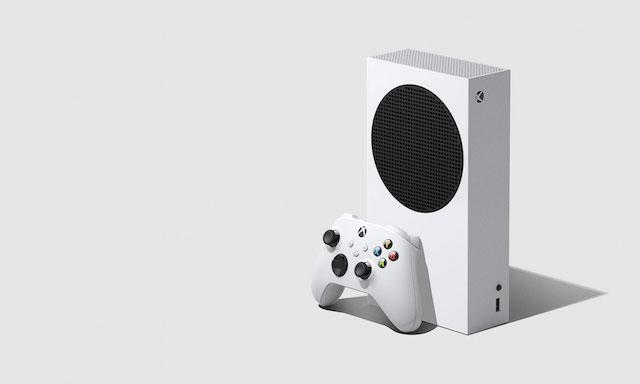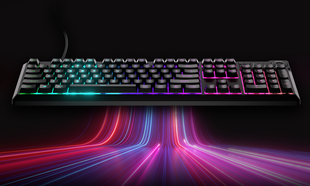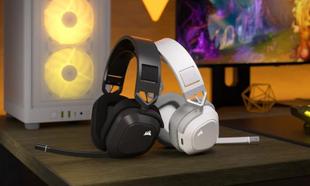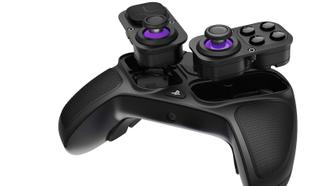Let’s face it – over the years, Microsoft and the Xbox has seen its fair share of successes and failures.
For every Xbox 360, there’s (shudders) Kinect. With the Series S, Microsoft has hit the nail on the head.
Packed with all the next-gen goodness of the new console generation at an affordable price, the Series S balances performance with price, carrying only a few drawbacks. During our review time of the console, we played many games across the spectrum of fully next-gen, optimised for Series S / Series X, and backwards compatible titles to stress test the console.
Undoubtedly, one of the best features in the Series S and Series X is Quick Resume. This lets you dip in and out of games and apps in and around 5 seconds, based on our experience. Particularly useful for players who like to change up what they’re playing, by bouncing between multiplayer and single-player experiences. The feature also works with apps on the console, so you can jump from watching a guide on YouTube right back to the game itself. Achievement hunters, this one's for you.
Smart delivery too, is a grace. By buying one game, you buy the title across all available Xbox consoles with the most optimised game delivered depending on the console you’re playing on. This is available on all first-party games, like 'Gears 5', and participating third party games such as 'Assassin’s Creed Valhalla', 'Marvel’s Avengers', and 'Cyberpunk 2077'.
Of course, it’s hard not to talk about Xbox these days without mentioning GamePass. The service is exceptional and provides day one owners with a vast wealth of over 100 games from first and third-party developers. Ranging all the way from classics like 'Mass Effect' right up to day-one releases of first-party games. With Game Pass Ultimate, you also receive a subscription to EA Play, accessing top titles like 'FIFA 21', 'Need for Speed: Heat', and many more.
One seriously impressive feature that all Xbox One owners will be a fan of is the lateral compatibility of all controllers across the range of Microsoft consoles. This means that every controller for the Xbox One can be used on the Series S, even my prized Day One 2013 Controller, and as used and worn as that controller is, there isn’t any noticeable input lag on our Series S. I say lateral here instead of backwards compatibility for one key reason. The new Xbox Series X|S controller is also fully compatible with the Xbox One. This means you can use the improved controller on the older console, if for some reason you’re feeling nostalgic. The feature makes all of the older controllers more valuable and allows you to retain the collection you may currently have to a usable extent.
On note of the new controller, it too has some impressive new features. First is the share button. While not a new feature to gaming - PS4 having already pioneered the idea near on ten years ago – this is Xbox’s first foray into the instant share button feature. It’s responsive and fast, with similar trimming options as the Xbox One. The new D-Pad is agile and responsive too, a hybrid of the circular multi-directional variant of the Elite controllers with the precision of the traditional D. Bluetooth Low Energy (BTLE) support makes what Microsoft is calling, “a more optimal pairing experience that doesn’t require the user to go to device settings menus”, when pairing the controller. Based on my roommate's response when I started pairing the controller to my old Xbox One as a test, this works incredibly well for pairing to PCs.
Above all else, the main point of the Series S over the X is that of price.
The Series S retails in Ireland at an RRP of €299.99. This is significantly cheaper than the Series X’s €499.99. But where you save on money in the short term, you may miss out in a few areas. The major concern is that of storage. For an all-digital console, the 512 GB console is rather little, allowing us to fit seven medium to large-sized games and 5 much smaller games during our review. If you want to have plenty of games to play on-demand, you may have to buy an external hard drive ranging in size and speed from €50 - €220. If you want the official Seagate SSD expansion card for the console, you’ll be looking at that higher range, making the console and external drive more expensive than the Series X.
The best selling point for the S is that if you’re not as impressed with 4K display definition, it gives all the benefits of next-gen in a lower resolution. While supportive of 4K and 120 FPS, and becoming much clearer when used, it isn’t outputted natively. That means if you haven’t got a 4k or 8k TV yet, or the money to fork out for both a new console and a snazzy new TV, then this is the better option for you.
A few final points to make on the Series S is its whisper-quiet noise profile. This thing doesn’t emit a single noise. You can’t notice any fan noise, even while performing a quick resume, any heavy loading in-game, or leaving it on for 12 hours straight does that change. And speaking of loading times, man, are they fast. The menu offers instant navigation. Loading speeds are breathtakingly quick, even in backwards compatible games.
All in all, the Series S is a phenomenal console and one that will serve as a great option if you’re on a budget. While there are storage concerns, and the lack of a disc drive for any collection you’ve built up, it’s worth the trade-off and perfect for casual gamers. If you tend to play 1 – 2 tentpole games per year, are still running with the Xbox One, and you're not overly bothered by 4K UHD graphics, then this is definitely for you. On the other hand, if you already have an Xbox One X, like to have a large library of games downloaded, want the best possible graphical fidelity, and have the extra cash, then maybe take a look at our Series X review.
The Xbox Series S launches in Ireland on November 10th.









































































